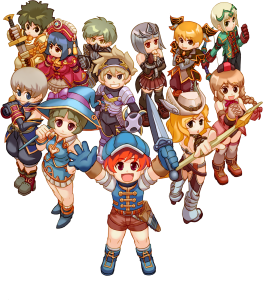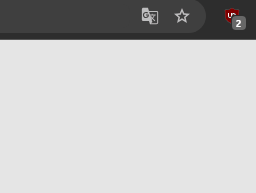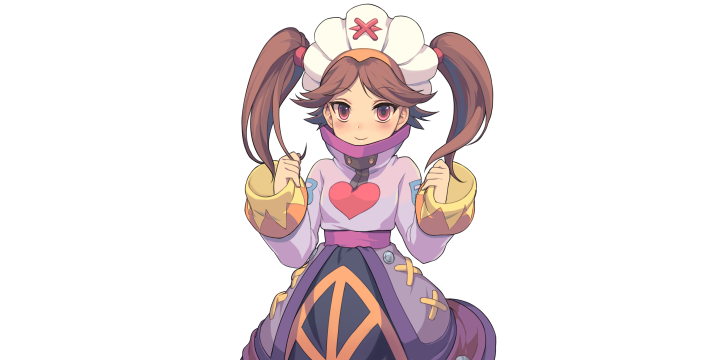Basic 1vs1 Blade Guide
Table of Contents
Introduction
Do you want to play the strongest class with the highest DPS (damage per second) in Flyff Universe? Then this guide is exactly what you’re looking for. This guide is especially tailored for free-to-play (F2P) players but is also useful for any beginner. Why the focus on F2P? It’s simple—this guide assumes that you won’t have access to consumables, the best upgrades, or the highest buffs. We’re working from the bare minimum, the F2P standard. If you have better resources, that’s great, but we won’t assume you have them because it’s unrealistic and not applicable to many players.
If you’re wondering why you should choose the Blade class, we recommend checking out our 1vs1 Mercenary guide first, which covers everything up to level 60. This guide will focus specifically on the Blade class, starting from level 60 onwards.
Stat Points “H”
When it comes to allocating your stat points, there are really only two viable options in our opinion. The first and most common approach is to put everything into STR (Strength). This is the best long-term strategy for maximizing your damage output.
The only alternative is to put some points into DEX (Dexterity), especially at lower levels. In the early stages of the game, DEX can be useful because you might struggle with attack speed, critical chance, and hit rate. At low levels, you probably won’t have a highly upgraded set, so these stats can help you compensate. There are definitely arguments in favor of investing in DEX.
However, as you level up, get better buffs, more effective set bonuses, and higher upgrades, DEX becomes increasingly irrelevant. The longer you play, the more money you have to invest in better equipment, making DEX less necessary. You would use DEX mainly for farming bosses due to its benefits in block and parry rates. When you’re fully buffed, your Blade would have maximum block rate (75%), which is incredibly helpful in avoiding one-shot kills from bosses like Red Meteonyker. It’s really convenient, but it does reduce my DPS significantly.
Therefore, your recommendation is to go full STR. But if you like the idea of better block rate, hit rate, and critical chance, you can invest in DEX, though we would strongly advise you never to go beyond 50 points in DEX. 50 is the absolute maximum—any more, and you’ll be sacrificing a lot of damage, and you’ll likely need to reset your stats later. With 50 DEX, you can manage for a while and enjoy the benefits, but I recommend either going full STR or keeping DEX at 50 at most if you decide to invest in it at all.
Skill Points “K”
Let’s move on to skills, and here’s a quick note to address a common question. When it comes to the Blade class, you should always equip an axe in the main-hand. Why? Simply because it provides a higher Attack value. That’s the main reason. What weapon you carry in the offhand isn’t as crucial because all skills and damage calculations are based on your main hand.
For example, as a Blade or Mercenary, you have the choice between axe skills and sword skills. The buffs and effects you gain are determined by the weapon in your main hand. Whether you carry a sword or an axe in your offhand doesn’t matter since the skills only apply to the main hand. So, in essence, what you equip in the offhand is largely irrelevant.
Given this, we prioritize axe skills because we want to always wield an axe in the main hand. Additionally, Empower Weapon skill is an important skill to consider, as elemental damage on auto-attacks shouldn’t be underestimated.
In general, you should always have Element +1 on your weapon, especially after level 60, as it can significantly boost your damage. For instance, if you’re using Water Element, aim for at least Water +1 on both your main and offhand weapons. The key takeaway is to have at least Element +1, alongside the Empower Weapon skill.
As for the skills, focus on the two axe skills Smite Axe and Axe Mastery, and that’s all you need of the Mercenary Skill tree. Sneaker is a useful skill to slow down or immobilize monsters, but it’s not crucial.
For Blades, the same principle applies—you don’t really need most of the skills. The only essential skill for a Blade using auto-attacks is Berserk. This skill can be activated every minute and boosts your attack power by 15%, attack speed by 15%, and block penetration by 20%. However, it reduces your skill damage by 50%, so if you’re using skills for some reason, avoid activating Berserk. But for auto-attacks, always activate it to increase your damage.
Finally, at level 100, you unlock the skill Rending Entry. While not mandatory, it’s quite handy. This movement skill functions similarly to Blinkpool with a short cooldown. It’s useful for quickly covering distances, especially when monsters are spread out, or for dodging special attacks from dungeon bosses. However, unlike Blinkpool, Rending Entry cannot be sped up with casting speed.
Cloak
Jewelry
Now, let’s talk about jewelry. This is also quite simple. For a Blade, regardless of your level, the jewelry setup remains consistent. At level 60, the standard gear includes two Strente +1 rings, two Mighteer +1 earrings, and an HP necklace—any HP necklace will do.
Later on, you’ll likely acquire the Puran Necklace, which many players use. You get this necklace as a quest reward from the Dekane Mine questline, which is an important quest for inventory space and EXP, among other things. The Puran Necklace is quite good since it provides 600 HP, which is a significant boost.
Upgrading the Gore Necklace isn’t really worth it because most players opt for the Puran Necklace instead. The standard jewelry setup is straightforward: STR rings, damage-boosting earrings, and an HP necklace. This setup remains consistent across all levels. Depending on your level, you’ll switch to higher-level versions of these items, like Strente+3 rings.
Sets
When it comes to equipment sets for Blades, the choices are quite straightforward and linear. The goal is to maximize damage output, making it essential to select the best set available for each level range. While there might be specific scenarios, like boss or giant hunting, where alternative sets could be useful, the overall progression is clear-cut.
Level 30-90: Comet/Cylos Set
Starting at level 30, you should equip the Comet/Cylos Set. Although it’s typically included in a Mercenary guide, it’s worth mentioning that you’ll be using this set all the way up to level 90. It might seem odd to use a level 30 set for that long, but trust us, the Comet/Cylos Set remains the best option for maximizing damage output.
The Comet/Cylos Set provides 10% hit rate, 7% critical chance, and 15% attack speed. These stats are crucial, especially the attack speed, until you have buffs like GT (Geburah Tiphreth). The downside is that the Comet/Cylos Set offers minimal defense, making you vulnerable to damage. However, the offensive benefits far outweigh this drawback, making it the go-to set until level 90.
Alternative for Bosses and Giants: Lv50-53 Shamutra/Shaentra Set
If you’re farming low-level bosses or giants, consider using the Shamutra/Shaentra Set. This set offers substantial defense against all elements except Wind, making it ideal for tanking in dungeons. While it lacks offensive stats like critical chance, it compensates with high survivability, allowing you to withstand significant damage. This set is particularly useful for scenarios where the Comet/Cylos’ low defense might be a disadvantage.
Level 90: Dayst/Dest Set
At level 90, it’s time to switch to the Dayst/Dest Set. Some players might argue against this switch, but we recommend it due to the increased damage you’ll face at higher levels. The Dayst Set offers 8% more critical chance and 10 STR, making it a clear upgrade from the Comet/Cylos.
The only stat you’ll lose is attack speed. However, by the time your Blade reaches level 90, your Ringmaster should be at least level 75, providing you with the Geburah Tiphreth (GT) buff. This buff compensates for the loss in attack speed, ensuring you won’t face any speed issues, especially when combined with Berserk.
Level 105: Hanes/Haganes Set
At level 105, you’ll switch to the Hanes/Haganes Set, which offers even more critical chene (+20%), and STR +15. Interestingly, this set also reintroduces attack speed (+15%) as a set effect, though by this point, it’s largely irrelevant due to your buffs. The increased critical chance and STR make this set a no-brainer, as it will significantly boost your damage output. Additionally, the higher defense provided by this set is essential for leveling up to 135 in Azria.
Level 135: Forrben/Forrain Set
At level 135, the Forsaken or Forrben/Forrain Set becomes available. This set doesn’t increase critical chance but instead adds a massive 30% critical damage, along with a +25 STR value. Although it still includes attack speed, which is unnecessary at this level, it remains the best option in terms of performance and value.
Level 150: Lycanith/Lyceris Set
Finally, at level 150, the ultimate Lycanith/Lyceris Set becomes available. Currently, this set is nearly unattainable due to its cost. However, it’s worth mentioning that this set offers 35 STR, 40% critical damage, 25% critical chance, and an additional repost reflex chance, making it the best endgame set by far.
Set Upgrades
Upgrading your sets is another common concern. For sets before level 105, such as the Comet/Cylos Set and Dayst/Dest Set, we recommend upgrading them to +6. This can be easily achieved using Low Scroll of SProtect, which is more affordable, although you may experience some frustrating failures. However, it’s still cheaper than using regular SProtects, which are much more expensive.
For socket cards, I suggest using up to three sockets with Lightning card. These cards are relatively inexpensive, costing around 2-3 million penya each, making them a cost-effective way to boost your damage. Achieving three sockets is usually straightforward and requires around 10~15 Scroll of GProtects. While four sockets are ideal, they can be costly, especially for the Comet Set, which you’ll be using for a long time.
For the Dayst/Dest Set, since you’ll only be using it for 15 levels, three sockets should suffice. However, starting with the Hanes/Haganes Set at level 105, it’s essential to go for four sockets since you’ll be using this set for 30 levels. The additional damage from the fourth Lightning 4% card will be crucial for leveling up efficiently.
Weapons
Your weapon choice largely depends on your playstyle, specific stats, and other factors. Here’s a breakdown of the optimal weapons at various levels.
Level 60: Guardian Axe
At level 60, the Guardian Axe stands out as the best weapon for maximizing damage. However, using two Guardian Axes can create issues with, hit rate, and attack speed. Additionally, Guardian Axes are currently very expensive.
For a more budget-friendly option, We recommend using one Guardian Axe and a Dretra Sword as your off-hand weapon. The Dretra Sword is affordable, with some players selling them for as low as 500k. It offers 15% hit rate and 5% attack speed, complementing the Guardian Axe, which provides 5 STR and 7% critical chance. This combination addresses all essential stats—critical chance, hit rate, and attack speed—especially in the lower levels where these issues are more pronounced.
If you can’t afford a Guardian Axe, consider using two Dretra Swords or a combination of a Taytra Axe (Hit rate+15%, Attack Speed+5%) and Dretra Sword. The Critin Axe (available at level 57) is another low-budget option, offering 7% critical chance, similar to the Guardian Axe but without the 5 STR boost. This axe can be dropped from monsters and is quite common.
For a full low-budget setup, a Critin Axe paired with a Dretra Sword or Taytra Axe is a good choice. This setup provides critical hit rate, attack speed, and adequate damage without breaking the bank.
Level 75: Guardian Axe + Historic Sword
At level 75, switch to one Guardian Axe and one Historic Sword. The Historic Sword offer even more critical chance +10% than the Guardian Axe, increasing your overall damage. You keep a heavily upgraded Guardian Axe as their main-hand weapon and use a Historic Sword in the off-hand when you need the hit rate from the Guardian Axe.
Level 90: Angel Axe
Upon reaching level 90, switch to dual Angel Axe. These axes provide 15% critical chance each, totaling 30% critical chance + 10 STR each. While they don’t offer critical damage, the significant critical chance boost is invaluable.
Level 105: Legendary Golden Weapons
At level 105, you can choose between Legendary Golden Axe and Legendary Golden Sword. The axes offer more critical damage (+30%) but less critical chance (+15%) compared to the swords, which gives less critical damage (+25%) but more critical chance (+20%). The best choice depends on your current stats, particularly your critical chance and critical damage. For most Blades, two axes are a solid choice, but the decision should be based on your specific needs.
Use a critical chance and critical damage calculator (picture in Triva) to optimize your setup. A small increase in critical chance or damage can significantly impact your overall DPS.
Level 120: Bloody Weapons
At level 120, switch to Bloody Weapons. The Bloody Axe provides 40% critical damage and 20% critical chance, while the Bloody Sword offers 45% critical damage and 15% critical chance. Both give +0.8 Steal HP. Again, your choice between these weapons should depend on your existing critical chance and critical damage.
Level 150: Lusaka's Crystal Axe and Sword
At level 150, consider using Lusaka’s Crystal Axe/Lusaka’s Crystal Sword. The exact stats of these weapons can vary, with critical damage ranging from 55% to 65%. Choosing between these weapons and the cheaper Nautilus Axe will depend on your needs for critical chance versus critical damage and the cost of the weapon. The Bloody Axe remains a strong alternative if you need more critical chance. Also, the 150 weapons are way to expensive.
Socket and Statting Strategies
When it comes to optimizing your gear in Flyff Universe, the right socket and statting choices can make a significant difference in your character’s performance, whether you’re in the early stages of the game or tackling high-level content. Here’s a detailed guide on how to approach these aspects at different stages of your journey.
Low-Level Sockets: Focus on Critical Chance
In the early levels, boosting your Critical Chance is key to maximizing your damage output. This is where Wind Card come into play. By socketing your weapons and gear with Wind Cards, you can significantly increase your Critical Chance, which allows you to deal more frequent and powerful critical hits. This is especially beneficial for classes that rely on fast, consistent damage, helping you to clear mobs quicker and level up efficiently.
High-Level Sockets: Prioritize Critical Damage
As you progress to higher levels, the focus shifts from Critical Chance to Critical Damage. At this stage, your Critical Chance is likely already sufficient, so enhancing the damage of those critical hits becomes more important. Thorn Card are the go-to choice for this purpose. Socketing Thorn Card into your high-level gear will boost your critical damage, allowing each critical hit to deal significantly more damage. This is crucial for maximizing your DPS (damage per second) in tougher dungeons and against stronger enemies
Statting with STR
When it comes to statting your equipment, one of the most effective approaches is to focus on Strength (STR), particularly if your class benefits from physical attack power. Using a Scroll of Strength on your set and weapon can provide a significant boost to your STR stat, which in turn enhances your overall attack power. This is especially useful for classes that rely on brute force and close-combat prowess, ensuring that each swing of your weapon hits harder and takes down enemies faster.
Pet
When it comes to pets, it’s important to note that Critical Chance pets are generally cheaper than Critical Damage pets. The decision between these two types of pets should depend on your current stats, particularly your critical chance.
For Blades, critical chance tends to increase significantly as you reach higher levels. Eventually, you’ll reach a point where your critical chance is so high that a Critical Chance pet might push you over 100% critical chance, making it less effective.
In contrast, a Critical Damage pet always provides a benefit, regardless of how high your critical chance is. This means that once you’ve reached 100% critical chance, a Critical Damage pet will consistently offer more value. However, until you reach that point, a Critical Chance pet is more cost-effective and should be your go-to, especially at lower levels when you’re still far from 100% critical chance.
To summarize:
- Critical Chance pets are more affordable and useful until you reach 100% critical chance.
- Once you achieve 100% critical chance, switch to a Critical Damage pet for better DPS.
This decision is unique to Blades because of the dual-wielding mechanic, which allows for more flexibility in balancing critical chance and critical damage. No other class has this level of versatility, making it crucial for Blades to carefully consider their pet choice based on their current stats.
Assist/Ringmaster Buff for 1vs1 Blade
Buff prioritization is often a subject of debate, and personal preferences play a significant role. For example, some players prioritize maxing out Quick Step early because it speeds up movement, saving time. However, focusing on Quick Step might mean sacrificing buffs that directly impact your damage or survivability.
If you’re playing a Blade with an Assist as your secondary character, here’s some advice on how to optimize your buffs:
- Heal: If you’re a full INT Supporter, Heal at level 3 is more than sufficient, especially at lower levels. Maxing out Heal is generally unnecessary and can be one of the biggest mistakes at low levels.
- Mental Sign: Maxing Mental Sign can be beneficial, but it’s not a must. It does increase buff duration, which can be helpful, but it’s more of a preference.
- Haste: Haste should be a top priority as it directly impacts attack speed, which is crucial for Blades.
- Accuracy: Max Accuracy next, as it significantly improves your hit rate, ensuring you land your attacks more consistently.
- Beef Up: After Accuracy, focus on Beef Up for additional STR, which increases your damage output.
- Heap Up: After the above buffs, you can work on Heap Up and Patience for more HP, although they are not as critical early on.
- Cannon Ball: This buff can be delayed until later, as its impact is less significant than the others.
Ringmaster Buffs:
If you’re playing a Ringmaster, the most critical buffs to prioritize are:
- Protect: Magic defense and defense boost
- Spirit Fortune: Attack boost
- Geburah Tiphreth (GT): This is the most important buff in the game, providing a 10% attack power increase and a 15% attack speed boost. It’s crucial for all classes, particularly for those focusing on DPS like Blades.
Source: The Guide was originally explained by Spielestyler in his YouTube video in German.









